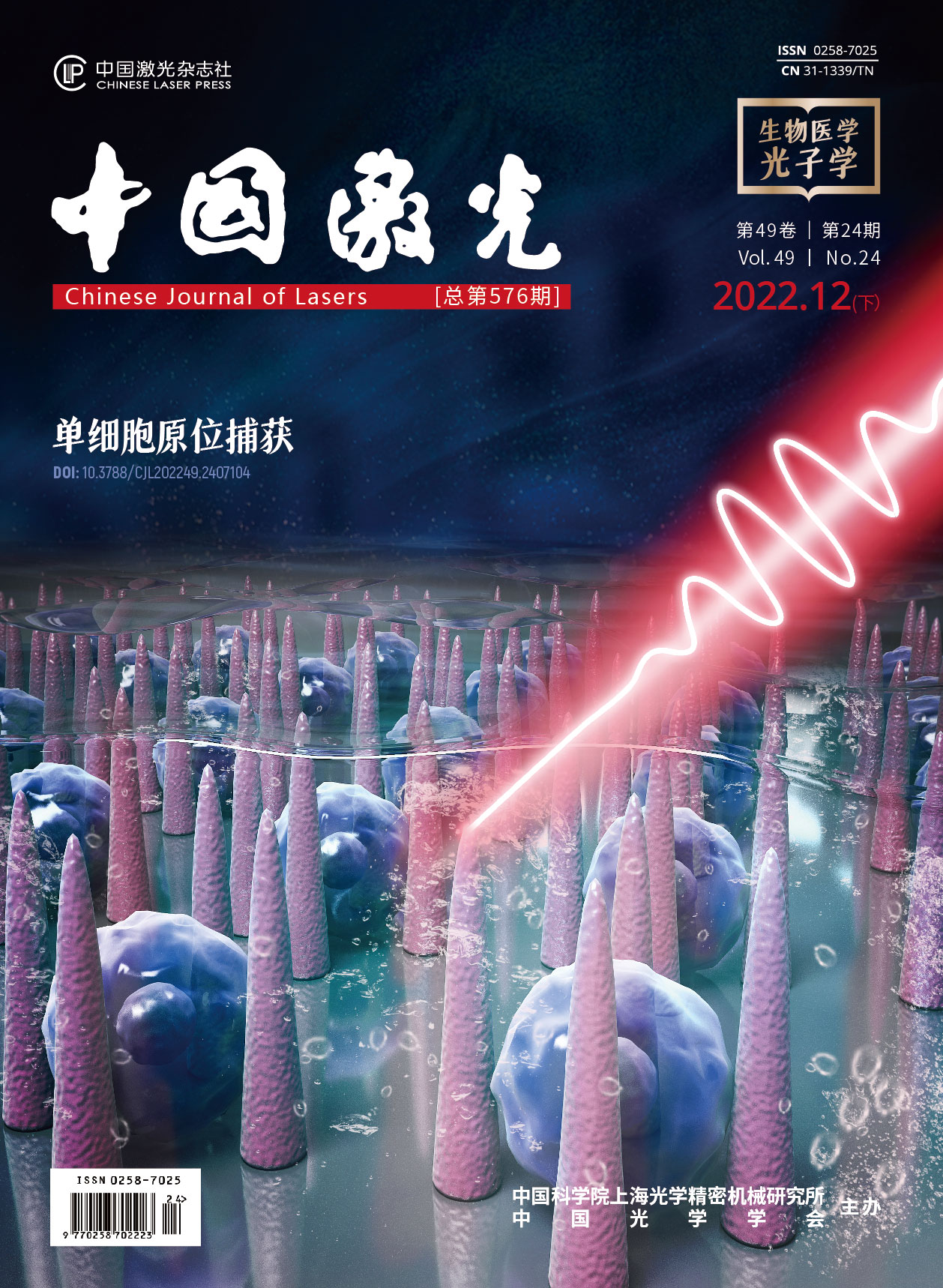基于严格耦合波理论的亚波长光栅合成孔径成像分析  下载: 691次
下载: 691次
Microscopy is an essential tool in most life science laboratories. However, the resolution of the microscope is limited by the numerical aperture (NA) of the objective and light wavelength, which is defined as λ/( 2NA ). In recent decades, methods such as stimulated emission depletion (STED), stochastic optical reconstruction microscopy (STORM), and photoactivated localization microscopy (PALM) have been proposed to overcome this limitation. However, in some fields, such as X-ray crystallography, wavefront sensing, and living cell imaging, label-free methods have demonstrated significant advantages. Aperture synthesis has been reported as one of the most effective label-free imaging methods that can be used to increase microscope resolution. Currently, most analyses of synthetic aperture techniques are based on scalar diffraction theory. However, for imaging objects smaller than the optical wavelength, the approximations and hypotheses in scalar diffraction theory are no longer valid. In this study, the imaging of subwavelength gratings is analyzed using the synthetic aperture method based on rigorous coupled-wave analysis (RCWA), which directly solves the Maxwell equation to obtain the analytical solution of the exit field under Gaussian beam illumination. The proposed method provides a more accurate analysis of synthetic-aperture imaging techniques for subwavelength gratings.
RCWA was used to analyze the diffraction of a grating incident by a plane wave. In practice, illumination is a focused Gaussian beam that can be expanded into a series of plane waves. Therefore, the output field distribution can be expressed as the product of each plane wave component of the rotated Gaussian beam and diffraction field at the corresponding incident angle solved by RCWA. A one-dimensional rectangular grating with a 280 nm period and 140 nm line width was employed in the simulation (Fig. 1). RCWA under Gaussian beam illumination was used to analyze the output optical field and angular spectrum distribution with a half angle of 10° at different angles (Fig. 3). The angular spectra obtained from different illumination angles were combined using the synthetic aperture method (Fig. 4). Then, inverse Fourier transform was used to obtain the image of the sub-wavelength grating. Thus, a super-resolution grating structure was obtained (Fig. 5).
As shown in equation (1), the dielectric constant of the grating area is expanded into the Fourier series, which represents the corresponding eigenmode of grating during calculation. The number of modes used in grating reconstruction is closely related to the boundedness of the grating. We discuss two cases: the illumination area being larger than the grating area (Fig. 6) and the illumination area being smaller than the grating area (Fig. 7). Overall, the number of modes required for reconstruction relates to the grating size and period. When the grating size is small and the grating period is less than the wavelength, at least five eigenmodes must be retained. Subsequently, the differences between scalar diffraction theory and RCWA are discussed. The errors of scalar diffraction theory relative to the RCWA method are analyzed for different grating periods, depths, and materials with different refractive indices (Fig. 8). This study shows that because the interaction between electromagnetic fields is ignored, scalar diffraction theory is no longer valid for sub-wavelength gratings. Finally, the resolution of the synthetic aperture method is discussed. Equation (5) and Fig. 9 show that the minimum distinguishable period is half the wavelength of the incident light. In addition, the minimum resolution is one-quarter of the wavelength of the incident light (Fig. 11).
In this study, the synthetic aperture imaging of sub-wavelength gratings is theoretically analyzed using strict coupled wave theory under Gaussian beam illumination. By accurately solving the optical field and angular spectrum distribution of the grating, the half space of the angular spectrum is synthesized using the synthetic aperture technique, and the image of the grating structure can be obtained by an inverse Fourier transform. In particular, the image of a grating with a 280 nm period and 140 nm line width is successfully reconstructed with the illumination of a 532 nm wavelength laser. For this synthetic aperture technique, the theoretical resolution is only related to the wavelength of the illumination light, as the resolved minimum grating period is λ/2 and the resolution of the line width is λ/4. This study provides guidance for using synthetic aperture technology with sub-wavelength gratings.
王柯威, 肖康, 孙静, 王中阳. 基于严格耦合波理论的亚波长光栅合成孔径成像分析[J]. 中国激光, 2022, 49(24): 2406001. Kewei Wang, Kang Xiao, Jing Sun, Zhongyang Wang. Synthetic Aperture Imaging Analysis of Sub-Wavelength Grating Based on Rigorous Coupled-Wave Analysis Method[J]. Chinese Journal of Lasers, 2022, 49(24): 2406001.







